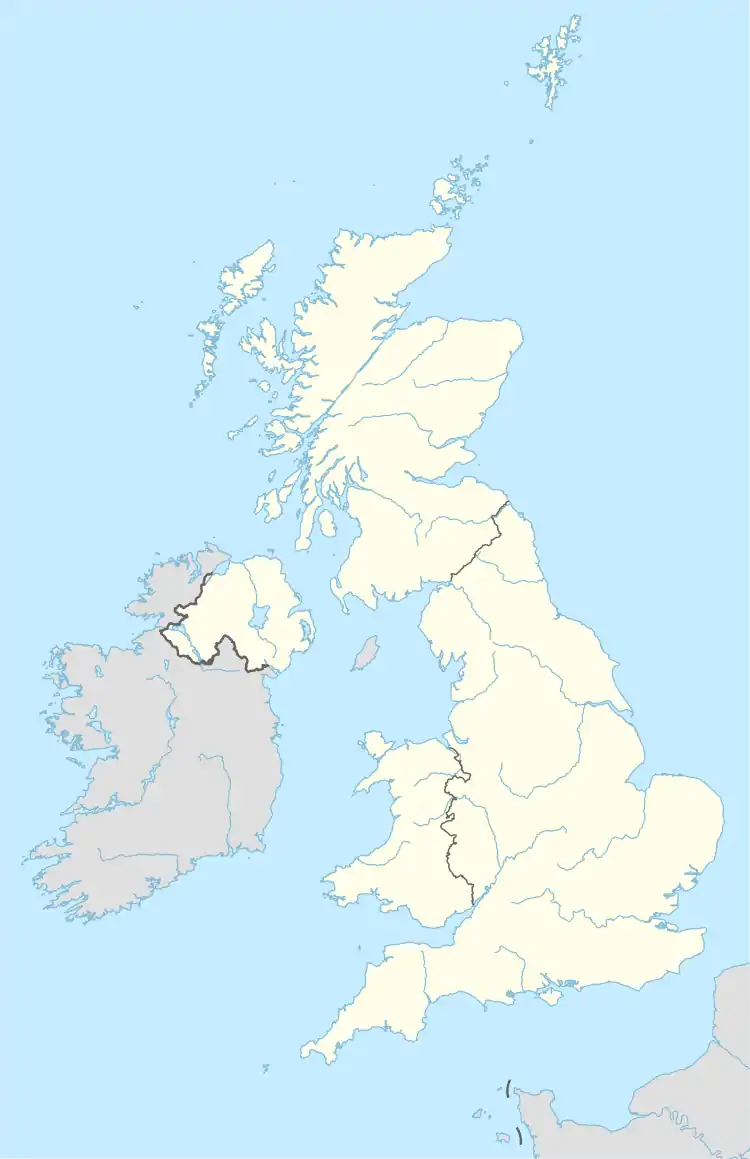| Chilmark Quarries | |
|---|---|
 Stone being worked at Chilmark, 2007 | |
 Location of Chilmark Quarries in the UK | |
| Location | Wiltshire, South West England |
| Coordinates | 51°4′48″N 2°2′11″W / 51.08000°N 2.03639°W |
| Area | 9.65 ha (23.8 acres) |
| Established | 1977 |
| Governing body | Natural England |
| Website | SAC at MAgiC |
Chilmark Quarries (grid reference ST974312) is a 9.65 hectare biological and geological Site of Special Scientific Interest (SSSI), in the ravine south of the village of Chilmark in Wiltshire, England.
The SSSI was first notified in 1977.[1] Its importance as a home for bats led to the site being designated in 2005 (together with Fonthill Grottoes) as a European Special Area of Conservation.[2]
The western section of the site is in Chilmark civil parish, while the eastern section (separated by a minor road) is in Teffont parish.
History
Chilmark stone, a form of limestone, was mined here from medieval times and was used for buildings including Salisbury Cathedral.[3][4] In 1936 the quarry and mines were bought by the Air Ministry and used as a storage area for RAF Chilmark, a munitions depot, until 1995.[5] Stone extraction continued on a small scale until the quarry closed c. 2007. In March 2019 the quarry re-opened (by Chilmark Stone (Properties) Ltd) and extraction of Ashlar and Walling stone has once again started.
Biological interest
Within the disused quarries on the western side of the valley, there is a system of caves in which up to 150 bats, of several species, roost in winter. Species which use the site include greater and lesser horseshoe bats, Daubenton's bat, Natterer's bat and Brandt's bat. The quarries have been suggested to be the largest British hibernation roost of the Bechstein's bat, but it remains uncertain whether Bechstein's bats hibernate in caves and mines.[6]
Geological interest
The quarry has exposures of Jurassic rocks, part of the Purbeckian beds. It is a fine building stone used for the main structure of Salisbury Cathedral and many other local buildings. Purbeckian limestones, possibly from Chilmark, were used for packing around at least one of the upright stones of Stonehenge, for houses on an Iron Age site at Fifield Bavant, and for Rockbourne Roman Villa and other Roman sites.[7] Chilmark stone is easy to work, but long-lived in use. Fossils are uncommon in the beds recently being extracted, but include ammonites and other shells.
References
- ↑ "Chilmark Quarries" (PDF). Natural England. Retrieved 23 March 2022.
- ↑ "Chilmark Quarries: Citation for Special Area of Conservation UK0016373". Natural England. May 2005. Retrieved 29 March 2016.
- ↑ Crowley, D.A. (ed.). "Victoria County History - Wiltshire - Vol 13 pp114-125 - Parishes: Chilmark". British History Online. University of London. Retrieved 29 March 2016.
- ↑ "Question: Chilmark stone". Wiltshire Community History. Wiltshire Council. December 2004. Retrieved 29 March 2016.
- ↑ "Planning Brief: RAF Chilmark" (PDF). Salisbury District Council. December 1999. Retrieved 29 March 2016.
- ↑ "S1323. Bechstein’s bat Myotis bechsteinii" in Bath and Bradford-on-Avon Bats Special Area of Conservation (Natural England, 2019), p. 5: "Caves and abandoned mines may be used for hibernation, though it is possible that the bats also remain in woodland roosts during the winter."
- ↑ "Corrections to 1996 paper". Archived from the original on 6 August 2007. Retrieved 10 August 2007.
External links
- Chilmark Stone (Properties) Ltd
- Natural England website (SSSI information)
- SAC boundaries at MAgiC
- Aerial photo of the site at Multimap.com
- Building Research Establishment report on Chilmark stone
- Joint Nature Conservation Committee for Chilmark quarries
- John Palmer's study of Roman Purbeck quarry industries